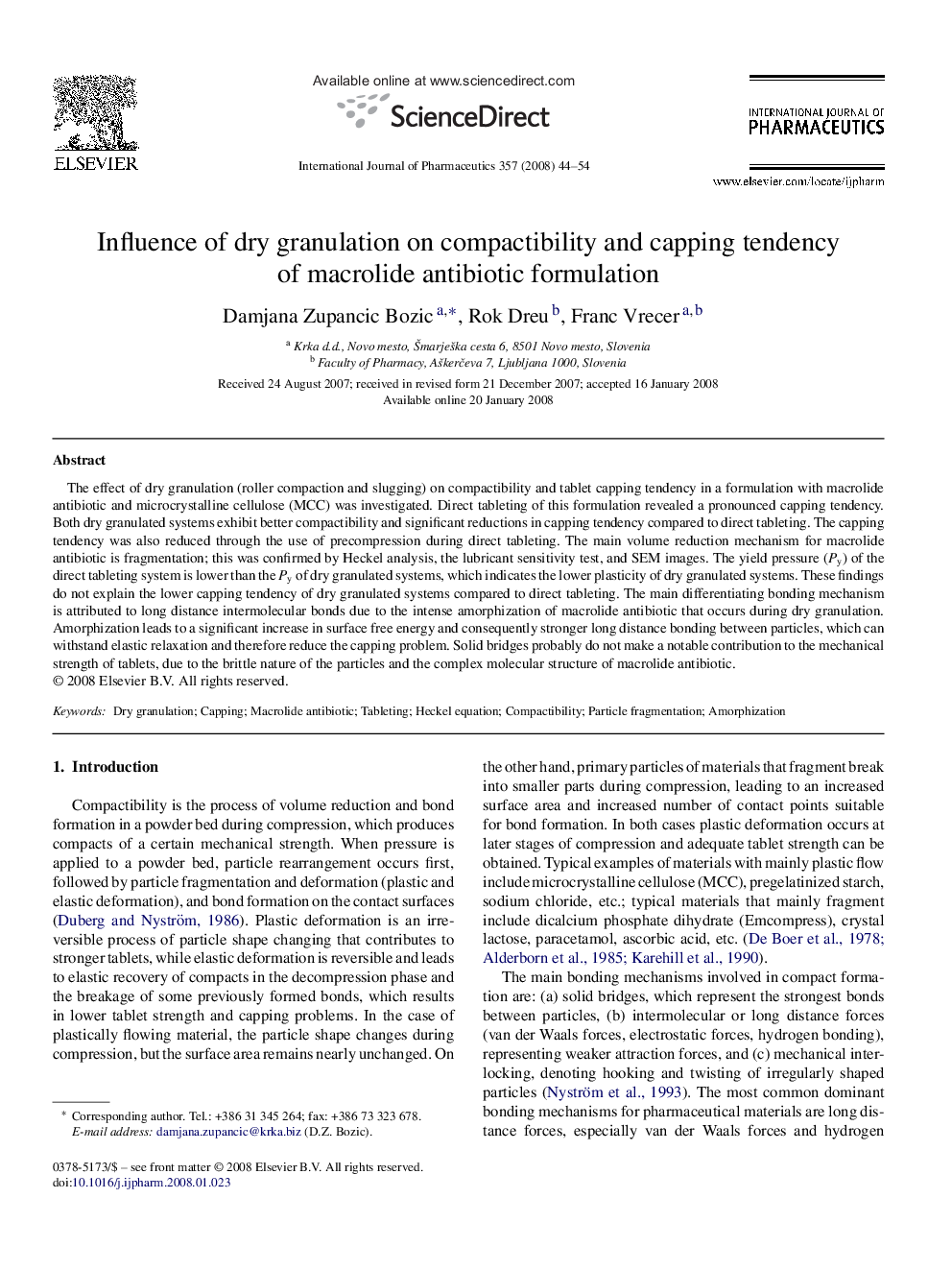| کد مقاله | کد نشریه | سال انتشار | مقاله انگلیسی | نسخه تمام متن |
|---|---|---|---|---|
| 2505291 | 1557489 | 2008 | 11 صفحه PDF | دانلود رایگان |

The effect of dry granulation (roller compaction and slugging) on compactibility and tablet capping tendency in a formulation with macrolide antibiotic and microcrystalline cellulose (MCC) was investigated. Direct tableting of this formulation revealed a pronounced capping tendency. Both dry granulated systems exhibit better compactibility and significant reductions in capping tendency compared to direct tableting. The capping tendency was also reduced through the use of precompression during direct tableting. The main volume reduction mechanism for macrolide antibiotic is fragmentation; this was confirmed by Heckel analysis, the lubricant sensitivity test, and SEM images. The yield pressure (Py) of the direct tableting system is lower than the Py of dry granulated systems, which indicates the lower plasticity of dry granulated systems. These findings do not explain the lower capping tendency of dry granulated systems compared to direct tableting. The main differentiating bonding mechanism is attributed to long distance intermolecular bonds due to the intense amorphization of macrolide antibiotic that occurs during dry granulation. Amorphization leads to a significant increase in surface free energy and consequently stronger long distance bonding between particles, which can withstand elastic relaxation and therefore reduce the capping problem. Solid bridges probably do not make a notable contribution to the mechanical strength of tablets, due to the brittle nature of the particles and the complex molecular structure of macrolide antibiotic.
Journal: International Journal of Pharmaceutics - Volume 357, Issues 1–2, 5 June 2008, Pages 44–54